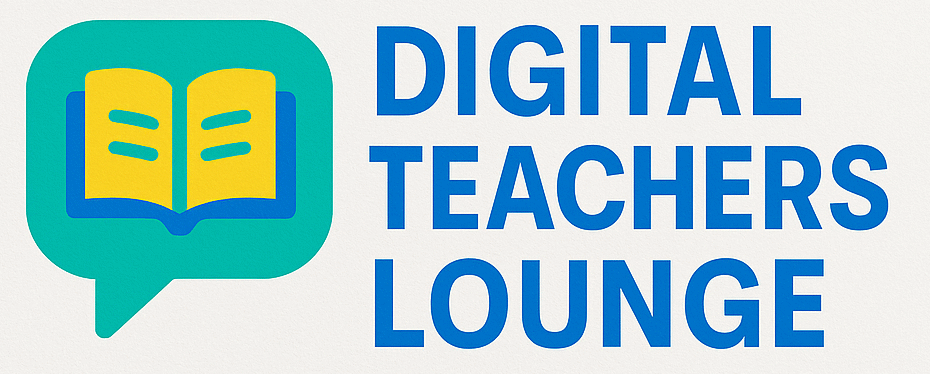Inclusive Education in the Digital Era: How Technology Creates Equal Opportunities for Every Learner

Every classroom tells a story- a story of different abilities, learning styles, and life experiences.
Some students learn really fast. Others take time. Some express themselves through words, others through visuals or movements. Yet every single one of them deserves a chance to shine.
That’s the whole essence of inclusive education-creating a learning environment where all students, regardless of ability or background, can learn and belong.
In todays world, technology is making that vision very possible.
From assistive tools that give voice to non-verbal learners, to digital features that remove learning barriers, inclusive education has never been more achievable.
in this guide, we’ll explore how you can use digital tools and inclusive practices to ensure every learner thrives in your classroom.
What is Inclusive Education and Why Does it Matter?
Inclusive education isn’t about ‘special’ learners from the rest- it’s about designing lessons that include everyone from the start.
it’s a philosophy rooted in three beliefs;
- every child can learn.
- Every child learns differently.
- The environment- not the learner- should adapt.
When teachers embrace inclusion,learning becomes;
- More equitable
- More empatheetic
- And ultimately, more effective for all students.
Technology acts aas a bridge- connecting learners to opportunities that used to be out of reach.
How technology Supports Inclusive Education
Here’s how the right digital tools can break barriers and open doors for diverse learners;
|
Learning Need |
Digital Solutions |
Example Tools |
|
Reading difficulty |
Text-to-speech tools |
Microsoft Immersive Reader, Speechify |
|
Writing Challenges |
Speech-to-text tools |
Google Docs Voice Typing, Dictation.io |
|
Visual Challenges |
Screen readers, magnifiers |
NVDA, ChromeVox, Seeing AI |
|
Hearing Impairment |
Subtitles, transcription |
Ava,YouTube autocaptions |
|
Attention issues |
focus and time tools |
Forest App, pomofocus |
|
learning Disabilities |
Simplified reading tools |
Rewordify, Natural Reader |
These tools turn “can’t learn” into “can learn differently”.
Assistive Technologies Every Teacher Should know
Here are some powerful, free or affordable assistive technologies you can use immediately:
- Microsoft Immersive Reader– reads text aalound, translates, and highlights as it goes.
- Bookshare gives students with print disabilities free access to accessible Ebooks
- Google Read and Write– offers speech-to-text, word prediction, and screen masking.
- Natural Reader– Converts Pdfs and web pages into spoken audio.
- Be my Eyes – Connects visually impaired learners with volunteers via live video.
- Ava– provides instant speech-to-text captions for classroom discussions
- Voice Typing(Google Docs)– helps learners who struggle with handwriting.
Tip: You should introduce assistive tools to the whole class, not just individual students- it normalizes accessibility and reduces stigma.
Designing Digitally Inclusive Lessons
Inclusion starts not wiht tools- but with design.
Here’s how to make your lessons inclusive before they reach your learners:
1.Use Multiple Formats
Present information in different ways- text, visuals, audio, and video
Use Canva visuals to explain complex ideas
Record your lesson summary in audio form for revision
Add captions to your instructional videos
2. Check Readability
Use large, simpe fonts(like Arial or OpenDyslexic)
Avoid clutter and unnecessary text
keep paragraphs short and use clear headings.
3. Make Navigation easy
Ensure students can find materials quickly.
use folder in google classroom
add consistent labels or color codes for subjects
4. Offer choice
Allow learners to express understanding in different formats- a poster, vide, or voice note. Choice empowers inclusion.
Accesssibility: Small Adjustment That Make a Big Difference
Accessibility is not complicated- it’s a mindset of empathy.
Here are simple digital practices that make learning accessible to everyone:
Add alt text to all images (Describe what’s shown)
Provide captions and transcripts for audio or video.
Avoid color-only cues(use text labels too)
Ensure strong color contrast.
Provide downloadable offline materials for low connectivity learners
Tip: Use tools like WAVE or Grackle Docs to check accessibility in your documents and websites.
The Roe of AI in Inclusive Learning
AI is quietly becoming a powerful ally in inclusion.
ChatGPT can simplify complex reading materials for learners with comprehension challenges
Speechify and Natural Reader use AI to create natural voiceovers for lessons
Grammarly helps students refine theri writing in real-time.
Curipod can generate adaptive lessons that match students level.
However teachers remain the human heart behind AI- guiding empathy, ethics and context.
Fostering an Inclusive Culture
True inclusion goes beyond technology. It’s about relationships- aabout making every learner feel seen, heard, and vaalued.
Celebrate diverse learning styles
model empathy and patience
encourage peer support and collaboration.
Reflect often: who is left out of my lessons- and why?
Inclusion is not an event. It’s a classroom culture.
Conclusion: Inclusion is a journey ,Not a checjbox
Technology is a tool- inclusion is a choice. when we choose to design lessons that welcome every learner, we build classrooms that mirror the world we want:fair, kind and full of possibility.
So start small- add captions, try a text-to-speech tool, simplify one lesson step-by-step, and your classroom becomes more open, more human, and more inclusive.

